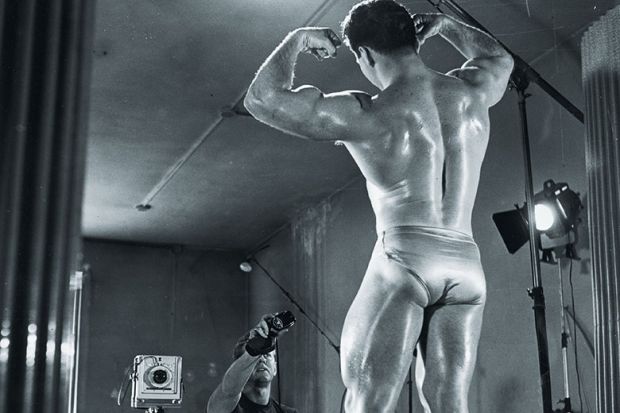Homoerotic physique magazines from the 1950s and 1960s have not received much critical attention. Scholarship on the history and culture of bodybuilding tends to overlook these publications, dismissing them as soft porn masquerading as fitness magazines. If they are discussed at all, it is only because of the damage they did to the reputation of the sport of bodybuilding. Likewise, histories of gay activism regard these publications as little more than lightweight, apolitical entertainment. They titillated an era of closeted gay men but did little to further gay rights.
Buying Gay is the first full-length study to contest these views. David Johnson argues that homoerotic publications such as Physique Pictorial not only contributed to the development of mainstream bodybuilding media – in that bodybuilding magazines had to develop their own representational style to distinguish their iconography – but, most importantly, helped to evoke a form of gay power in the pre-Stonewall era. Physique magazines offered an interactive forum in which readers could publish letters and thus create a community for gay men, but they also testified to the influence of gay consumer culture. Beefcake publications appeared everywhere, thanks to the power of capitalism, and are, therefore, one of the earliest examples of the importance of the pink dollar.
Johnson even argues that the consumption of these magazines was a form of proto gay activism. Most histories of gay liberation praise the efforts of early homophile movements (which strove to encourage mainstream society to tolerate gays and lesbians) but dismiss physique culture magazines as insignificant. Buying Gay, by contrast, stresses that consumption of these publications was inherently political, given that the men purchasing and distributing them engaged in considerable social and cultural risk. Being identified as a reader of Physique Pictorial was a moment of “coming out” before the term gained cultural currency. In this respect, Buying Gay demonstrates that pre-Stonewall gay US culture was not necessarily as dark and oppressive a closet as contemporary gay men might imagine.
Buying Gay offers a meticulously researched analysis of the publications of the time, discussing how they not only influenced gay aesthetics but also impacted upon cultural, social and political gay rights matters. The legal importance of the pornography and indecency charges brought against physique magazine publishers such as Bob Mizer is discussed in relation to the development of gay identity politics. The book draws on relevant historical and sociological scholarship but is written in an accessible style and is refreshingly free from the gender studies jargon that often clutters scholarship in contemporary queer studies. It will be particularly enjoyable for readers who are aware of the publications, and the events and notoriety surrounding them, but have not had the opportunity to investigate the full socio-political importance of these texts.
Many contemporary gay men, swiping through endless profiles on their mobile dating apps, might well be surprised to learn that the consumption of images of buff male bodies was already an established practice in the 1950s. Like the innumerable gay apps and social media of contemporary culture, physique magazines not only offered erotic pleasure but also served as a source of community identification and covert gay activism.
Niall Richardson is a senior lecturer at the University of Sussex’s Centre for Cultural Studies.
Buying Gay: How Physique Entrepreneurs Sparked a Movement
By David K. Johnson
Columbia University Press, 328pp, £25.00
ISBN 9780231189101
Published 12 March 2019
后记
Print headline: Beefcake with a hidden hard core




